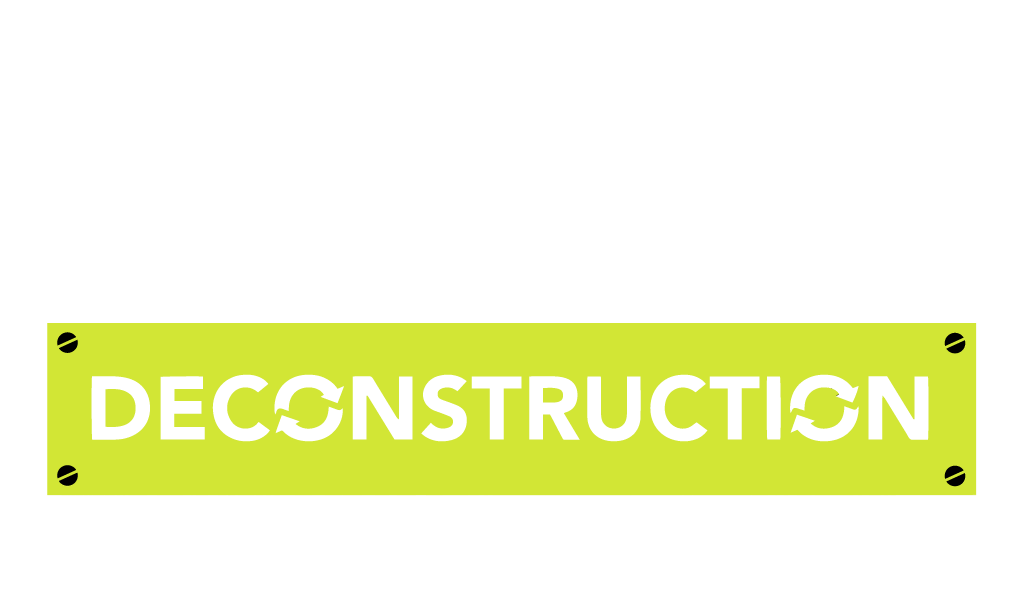How materials get appraised and donated from your deconstruction job
Are you interested in donating reusable materials from your renovation or demolition project? Awesome. We’re here to help you every step of the way, from appraising materials to filling out paperwork and, of course, donating the materials on your behalf. Here’s a step-by-step guide of how it works.
A big part of why many customers choose deconstruction services over demolition is because of the opportunity it gives to donate perfectly-usable building materials for reuse and give them an extended life. The alternative – landfilling – is a major source of waste: In fact, 40% of all landfill waste in Colorado is comprised of materials from the construction and demolition (C&D) industry.
We’re proud to offer a sustainable alternative to trashing perfectly reusable materials and goods including appliances, fixtures, lumber, and more. We work with local and national partners to give these materials a new life and, in the process, support organizations providing low-cost used building materials to local communities.
In addition, material donations are tax deductible and provide an opportunity for homeowners and property managers to save money on the overall costs of their project. The process is truly a win-win-win for customers, the community, and the environment!
How it works: Donating Reclaimed Building Materials from Your Construction Site
Click image to enlarge
Detailed steps
Step 1: YOU ARE HERE!
You’re interested in receiving tax deductions for your building material donations.
NOTE: If you want to claim more than $5,000 of donation value on your taxes you need an appraisal report, which can be provided by a qualified appraisal company for a fee.
Step 2: JOB SITE WALK
An estimator assesses the scope of work during a walk-through and speak to you about potential tax deductions and what items could be removed for donation.
Step 3: FREE APPRAISAL ESTIMATE
Back at the office, the estimator creates a list of items that could be donated, uploads photos, and sends an email to you and a building material appraisal group, which provides a free rough estimate of the appraisal value. At this stage, you may also provide any additional information to the appraiser including original acquisition cost, damage, modifications, or improvements to the property. This will help ensure a more accurate rough estimate.
The appraisal company then responds with an email that outlines the rough estimate of the appraisal value, potential tax deduction savings based on your tax income bracket, and their service fee details.
Step 4: INVESTIGATION AND DECISION
You meet with your CPA or tax advisor to decide whether getting materials appraised is the right move for you.
Step 5: APPROVAL
Once you approve the deconstruction project, the job is scheduled and a deposit is collected. If you wish to have materials appraised and donated, you’ll notify the estimator at this stage to let them know.
NOTE: While you wait for the project to begin, we keep the lines of communication open and encourage you to reach out anytime!
Step 6: PROJECT START
One week prior to the project start date, you’ll receive an email introducing the crew and will have an opportunity to address any changes to scope, plans, or direction.
Step 7: DECONSTRUCTION
We take a salvage-first approach to maximize what can be saved for donation. We work with local nonprofits to pick up the materials from the jobsite, or we will process the materials at our Warehouse and sell them on behalf of the non-profit The National Center for Craftsmanship.
Step 8: DONATION RECEIPTS AND PICTURES
We share with you a Google Drive folder of pictures of materials recovered for donation, and all donation receipts.
Step 9: SUBMIT INFO TO APPRAISER
You contract with a building material appraiser and send them your project donation receipts and pictures that were sent to you by Perks Deconstruction.
Step 10: Fill Out IRS FORM 8283
The IRS requires the taxpayer to complete IRS Form 8283. The building material appraisal group can point you and your CPA to information regarding how the form should be completed and the importance of ensuring it is completed correctly.
You will need to send the 8283 form to the non-profits for signature. Sometimes there will be more than one non-profit that accepts materials from your jobsite. If this is the case, it results in more than one 8283 for each job, but it does not further complicate the donation. Each 8283 form will match a separate and distinct donation receipt, and the final appraised value of the two receipts will match the total found on the appraisal.
Step 11: APPRAISAL REPORT
You receive an appraisal report from your appraiser and submit it to your CPA. This report will be submitted when you file your taxes.
The process is now complete!
The salvageable materials from your deconstruction job have been donated for reuse, and your appraisal report is complete and ready to file with your taxes.
Denver: Need deconstruction services?
Contact us today for more sustainable demolition practices that prioritize donating and recycling materials!
